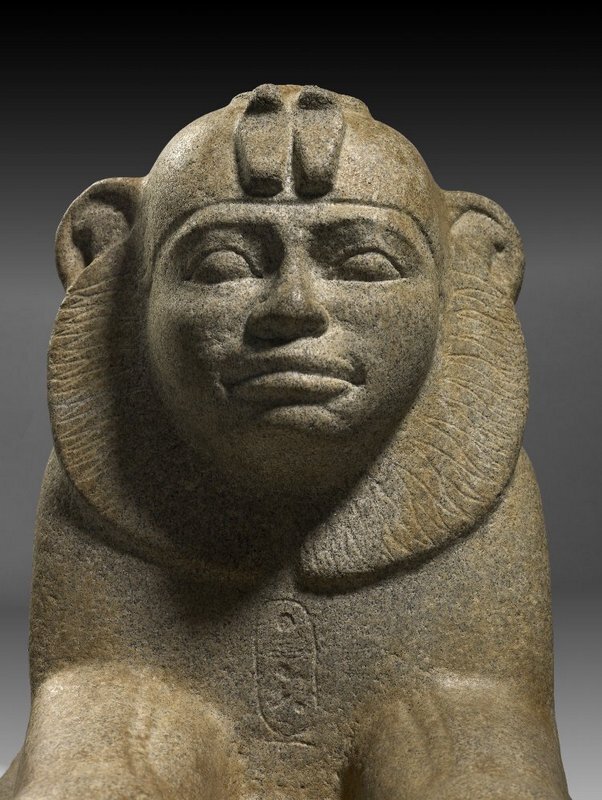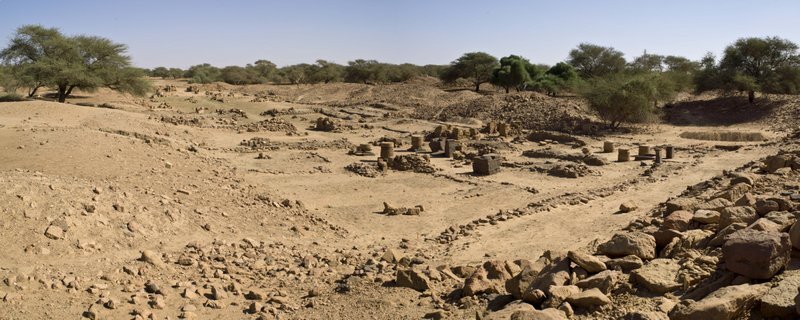
It has been said that the period between 760 BCE to 656 BCE in Egypt was the ‘age of the black pharaohs’. It was during this time that ancient Egypt was ruled by a dynasty or succession of kings from Nubia, the Kingdom of Kush, a rival African kingdom just to its south in what is today northern Sudan. Beginning with king Kashta‘s successful invasion of Upper Egypt, what became known as the 25th Dynasty achieved the reunification of Lower Egypt, Upper Egypt, and also Kush (Nubia), the largest Egyptian empire since the New Kingdom. They introduced new Kushite cultural elements into Egypt, yet they also reaffirmed and promoted the traditional ancient Egyptian religion, temples, and artistic forms.
The dynasty reached its zenith during the powerful rule of Taharqa, who reigned between 690 and 664 BCE. Known among many other things to have allied with the Judahite King Hezekiah to save Jerusalem from the Assyrians under Sennacherib, he spent much of his reign battling the Assyrian Empire.
Now, some 2500 years after his rule and that of the other ‘black pharaohs’ of the 25th Dynasty, a special exhibit at the Ny Carlsberg Glyptotek in Copenhagen, Denmark, reveals a one-of-a-kind showing of more than 70 archaeological finds to the public, summing up a time when a fusion of Egyptian and African traits and culture characterized ancient Egypt for a century. The exhibition zooms in and out on its subject, presenting temple finds of varying scope and scale as well as small, but highly sophisticated artifacts from Nubian tombs and palaces. The vast majority of the archaeological finds on display were excavated in Meroë and Kawa in present-day Sudan, where large-scale archaeological excavations are still in progress. Through photographic documentation, including reports from the Glyptotek’s most recent expedition in the area, and through reconstructions of the arrays of objects that appeared to the archaeologists working there in the present, some 2,500 years after the last black pharaohs ruled, the exhibition seeks to capture echoes of that distinctive time. Noteworthy among the objects is Taharqa’s classical sphinx, a prominent loan from the British Museum, which has made the extraordinary gesture of allowing the Glyptotek to display one of the highlights from its own collection.
_______________________________________
 On display: Above and below, Sphinx of Taharqa from the Temple of Taharqa in Kawa, Sudan 680 BC granite Credit: The Trustees of the British Museum
On display: Above and below, Sphinx of Taharqa from the Temple of Taharqa in Kawa, Sudan 680 BC granite Credit: The Trustees of the British Museum
____________________________________________________
 ____________________________________________________
____________________________________________________
 The Temple of Amun in Meroë, Sudan 1st cent. BC – 1st cent AD Credit: Janne Klerk
The Temple of Amun in Meroë, Sudan 1st cent. BC – 1st cent AD Credit: Janne Klerk
_____________________________________________________
 On display: Part of Bes pillar from the Temple of Amun in Meroë, Sudan. 1st cent. AD sandstone, painted Credit: Ole Haupt
On display: Part of Bes pillar from the Temple of Amun in Meroë, Sudan. 1st cent. AD sandstone, painted Credit: Ole Haupt
______________________________________
 On display: Baboon statue with the name of Taharqa from Kawa, Sudan 25th Dynasty, 690 – 664 BC granite Credit: Ole Haupt
On display: Baboon statue with the name of Taharqa from Kawa, Sudan 25th Dynasty, 690 – 664 BC granite Credit: Ole Haupt
_______________________________________
The exhibition supplements the Glyptotek’s rich collections from the period with important loans from the National Museum of Denmark and the British Museum. In preparation for this exhibition, the Glyptotek has carried out extensive restoration and conservation work on a number of archaeological finds. Two large stelae that were completely smashed during transit from Sudan a hundred years ago have now been pieced back together and are exhibited for the first time ever. They are presented here alongside two other stelae, also owned by the Glyptotek, which were found at the same site: Taharqa’s large temple in Kawa.
The exhibit, Taharqa: The Black Pharaoh, will be shown at the Ny Carlsberg Glyptotek in Copenhagen, Denmark, from April 26 to June 28, 2015.
____________________________________________________
To accompany the exhibition the Glyptotek will publish a catalogue, in English, written by the exhibition curator, Tine Bagh. The book provides the first-ever comprehensive account of the Glyptotek’s collection of finds from Meroë and Kawa in Sudan.
Finds from J. Garstang’s Excavations in Meroe and F. Ll. Griffith’s in Kawa, Sudan, in the Ny Carlsberg Glyptotek.
The exhibition is sponsored by Knud Højgaards Fond.
This article was written with some edited and adapted text from the subject Ny Carlsberg Glyptotek press release.
____________________________________________________
 You can read our more in-depth articles about new discoveries and developments in archaeology and anthropology with a premium subscription to Popular Archaeology Magazine. Find out what Popular Archaeology Magazine is all about.
You can read our more in-depth articles about new discoveries and developments in archaeology and anthropology with a premium subscription to Popular Archaeology Magazine. Find out what Popular Archaeology Magazine is all about.
In addition, the latest Popular Archaeology ebook is now available.
______________________________________________
Travel and learn with Far Horizons.
____________________________________________
 Popular Archaeology’s annual Discovery Edition eBook is a selection of the best stories published in Popular Archaeology Magazine in past issues, with an emphasis on some of the most significant, groundbreaking, or fascinating discoveries in the fields of archaeology and paleoanthropology and related fields. At least some of the articles have been updated or revised specifically for the Discovery edition. We can confidently say that there is no other single issue of an archaeology-related magazine, paper print or online, that contains as much major feature article content as this one. The latest issue, volume 2, has just been released. Go to the Discovery edition page for more information.
Popular Archaeology’s annual Discovery Edition eBook is a selection of the best stories published in Popular Archaeology Magazine in past issues, with an emphasis on some of the most significant, groundbreaking, or fascinating discoveries in the fields of archaeology and paleoanthropology and related fields. At least some of the articles have been updated or revised specifically for the Discovery edition. We can confidently say that there is no other single issue of an archaeology-related magazine, paper print or online, that contains as much major feature article content as this one. The latest issue, volume 2, has just been released. Go to the Discovery edition page for more information.






